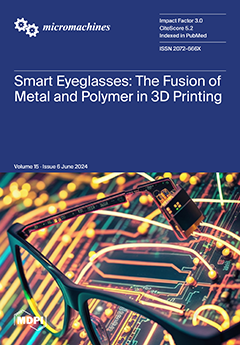Open AccessArticle
Innovative Stacked Yellow and Blue Mini-LED Chip for White Lamp Applications
by
Tzu-Yi Lee, Chien-Chi Huang, Wen-Chien Miao, Fu-He Hsiao, Chia-Hung Tsai, Yu-Ying Hung, Fang-Chung Chen, Chun-Liang Lin, Kazuhiro Ohkawa, Jr-Hau He, Yu-Heng Hong and Hao-Chung Kuo
Cited by 3 | Viewed by 2568
Abstract
This study introduces a novel approach for fabricating vertically stacked mini-LED arrays, integrating InGaN yellow and blue epitaxial layers with a stress buffer layer to enhance optoelectronic characteristics and structural stability. This method significantly simplifies the LED design by reducing the need for
[...] Read more.
This study introduces a novel approach for fabricating vertically stacked mini-LED arrays, integrating InGaN yellow and blue epitaxial layers with a stress buffer layer to enhance optoelectronic characteristics and structural stability. This method significantly simplifies the LED design by reducing the need for RGB configurations, thus lowering costs and system complexity. Employing vertical stacking integration technology, the design achieves high-density, efficient white light production suitable for multifunctional applications, including automotive lighting and outdoor signage. Experimental results demonstrate the exceptional performance of the stacked yellow and blue mini-LEDs in terms of luminous efficiency, wavelength precision, and thermal stability. The study also explores the performance of these LEDs under varying temperature conditions and their long-term reliability, indicating that InGaN-based yellow LEDs offer superior performance over traditional AlGaInP yellow LEDs, particularly in high-temperature environments. This technology promises significant advancements in the design and application of lighting systems, with potential implications for both automotive and general illumination markets.
Full article
►▼
Show Figures






